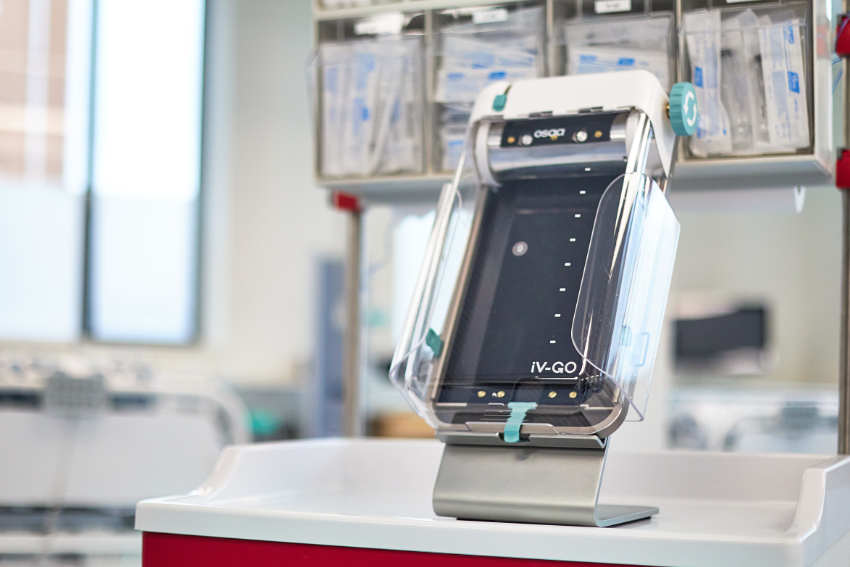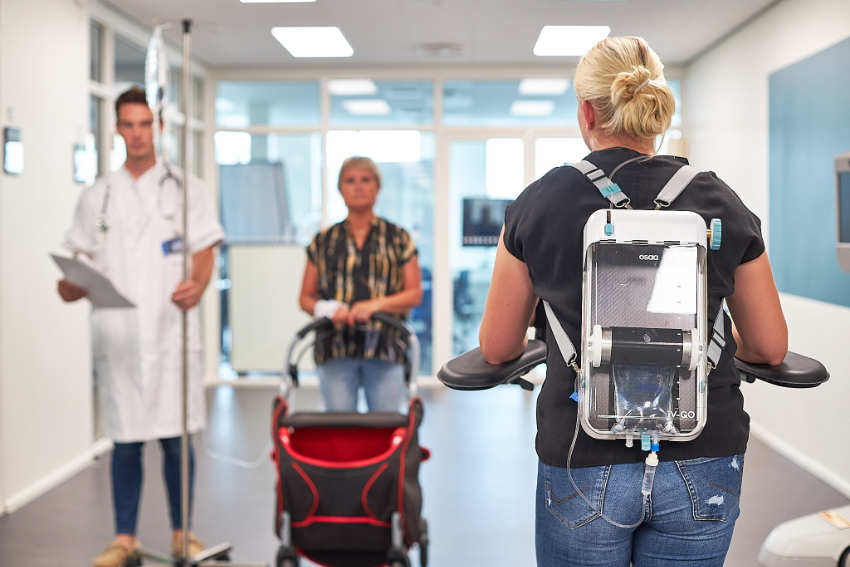OSAA Innovation is a Copenhagen-based medtech company revolutionising IV treatment solutions in healthcare. OSAA Innovation is dedicated to address the stigma surrounding patients undergoing IV treatments and as well the overall lack of progressive technological solutions within the IV healthcare industry.
By combining user-focused approach and smart mechanical engineering, OSAA Innovation aims to empower healthcare professionals with user-friendly products to improve patients’ healthcare journeys and enhance the treatment results.
Interview with Ahmed Hessam, CEO & Founder & Alexei Cernenco, QA/RA Manager at OSAA Innovation.
What are the main areas of activity of the company?
Ahmed Hessam & Alexei Cernenco: At OSAA Innovation our primary focus is on advancing the infusion technology to enhance patient safety and empower healthcare professionals.
Our journey began with a commitment to addressing the existing constraints in IV treatment and the critical need for enhancement of the experience: providing mobility and independence for patients. Our core product, iV-GO®, exemplifies this mission by enabling patients to receive IV therapy wherever they are. This groundbreaking device allows individuals to move beyond the constraints of hospital beds and IV poles, facilitating treatment “on the go”—whether in hospitals, at home, or outdoors.
As the healthcare landscape continues to evolve, we are expanding our product ecosystem to address significant gaps in the IV treatment industry.

What is the news about new products/services?
A.H & A.C: At OSAA Innovation every product development initiative is focusing on the addressing and closure of the existing healthcare gap. Currently one of key areas of our work involves creating of the solutions which will allow the healthcare providers to control and regulate treatment duration and flow settings of ongoing infusions for multiple patients remotely. This innovation gives nurses and clinicians access to critical treatment information whenever and wherever they are in the hospital. By providing nurses with continual real-time infusion data, we can ensure that they can make more informed treatment decisions without needing to visit each bedside.
Additionally, we are currently expanding our ecosystem by developing the products which will specifically support the patients’ perioperative experience. One of our newest additions is the iV-Warmer® device — an intuitive and connected blood and fluid warmer for infusion and transfusion purposes.
What are the ranges of products/services?
A.H & A.C: OSAA Innovation product ecosystem is a comprehensive and interconnected network of cutting-edge medical devices designed to enhance clinical workflows, and improve healthcare outcomes for patients.

The ecosystem features 2 distinct product series:
- The GO-series – This series includes novel mechanical pressure pumps that empower patients with increased mobility during IV treatment. Designed for flexibility, the GO-series eliminates the need for gravity or IV poles, allowing patients to move freely while receiving care.
- The VITA-series – the VITA-series includes lightweight infusion monitors and infusion pumps that provide unprecedented real-time monitoring capabilities, both on the device and remotely. With each generation, the VITA-series enhances user experience and clinical effectiveness, ensuring that healthcare providers can deliver precise and timely treatment.
At the core of the OSAA Innovation’s IV ecosystem is iV-View® solution, a web-based dashboard that enables hospital staff to track all connected OSAA IV devices allocated across the different wards and monitor several patients’ infusion statuses from a single station.
What is the state of the market where you are currently active?
A.H & A.C: The global infusion pump market was estimated to be worth $17.1 billion in 2023 and is poised to reach $26.2 billion by 2029, growing at a CAGR of 7.3% from 2023 to 2029. This substantial growth can be attributed to a number of factors, including the prevalence of chronic diseases, the increase in the elderly population, advancements in technology, and the rising demand for home healthcare.

Despite approximately 90% of hospital in-patients receiving IV treatment, the industry remains one of the most traditional, with standard IV poles and their constraints prevalent in nearly every healthcare setting. One of the earlier surveys by OSAA Innovation states that for 75% of nurses, mobilisation is the biggest challenge when using the IV pole, highlighting an urgent need for the market players for innovation to address this issue and improve patient care.
What can you tell us about market trends?
A.H & A.C: Among the major trends that are currently driving the global IV therapy market will be:
- Early mobilisation of patients:
With the ongoing evolution of healthcare recovery protocols, patients undergoing major surgeries are now encouraged to regain mobility much earlier than in previous decades. For instance, early mobilization following orthopaedic surgery has become increasingly important while parenteral antimicrobial therapy is now often provided in outpatient settings.
These changes in treatment setting and delivery have highlighted the need for a greater number of mobile versatile IV options.
And this is where OSAA Innovation and our core product iV-GO® – world’s first portable 100% mechanical IV-pump – can make a difference. iV-GO® infusion pump liberates individuals from the constraints of hospital beds and IV poles, allowing for treatment “on the go”—whether in hospitals, at home, or even outdoors.
While patients clearly benefit both physically and mentally from the opportunity to be mobile, hospitals gain the advantage of earlier patient discharges and more efficient utilisation of their beds.
- Early discharges or treatment at home.
One of the emerging trends within the infusion therapy market is the shift of treatmens to home care settings. Home infusion therapy can lead to improved patient outcomes. It also provides the conditions for reduced risk of cross-contamination, since patients are treated in comfort of their homes and not in the hospital.

IV therapy at home becomes even a better reality with an opportunity of remote treatment-monitoring, where patients are getting the IV therapy at home under the remote monitoring by their nurse or clinician,
- Trend of connectivity and interconnectivity in different care settings.
The trend of connectivity and interconnectivity is increasingly supported by remote monitoring and regulation. This dual approach not only enhances patient care but also streamlines healthcare processes, making them more efficient and effective.
The concept of ‘horizontal’ connection refers to the interconnection between patient-centered devices, such as wearable health monitors, infusion pumps, and portable diagnostic tools. These devices communicate with each other seamlessly, allowing for real-time data sharing and integration.
In contrast, the ‘vertical’ connection describes the integration between these devices and broader information systems, such as electronic health records (EHRs) and clinical decision support systems (CDSS). This connection enables the aggregation of data from multiple sources, providing healthcare professionals with a comprehensive view of a patient’s health status.
What are the most innovative products/services marketed?
A.H & A.C: When we address the existing innovations on the IV therapy market, we can see that an increasing number of products are being developed to interconnect with hospitals’ EMR and EHR systems, to provide more data about the treatments and conditions to clinicians.

Despite the fact that this integration presents challenges due to strict regulations governing data collection, storage, and usage, there is significant potential for enhancing treatment effectiveness, as numerous factors can influence a patient’s condition and treatment course. Addressing some of those factors or collecting information about it can significantly increase how effective the treatments can be.
What estimations do you have for the rest of 2024?
A.H & A.C: The primary trend driving growth in the infusion therapy market is the transition of procedures to alternative care settings.
IV therapy provided “on-the-go” or in the convenience of the patient’s home is the new positive reality which requires healthcare professionals to be equipped with the right tools to have remote access to the treatment status and act immediately in case of any disruptions. As such, we expect that the last quarter of 2024 will be the time where the medtech companies will specifically innovate in the area of remote monitoring of IV treatment.

